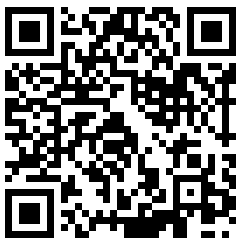تببین مفهوم دستور زبان طراحی شهری در الگوی بافت های تاریخی
چکیده: شهر درون خود مجموعه ای از مشکلات و نیز فرصت ها و امکانات را در کنار هم جای داده است که سیاست های کنونی در استفاده از امکانات درونی آن برای غالب شدن بر مشکلات کافی نبوده است. تهیه سیاست ها و برنامه های طراحی و برنامه ریزی شهری خود در جهت رهنمونی شکل فیزیکی شهر و نحوه دخالت در شهر کفایت نمی کند. با توجه به شرایط حیاتی و ضروری بافت های فرسوده شهری و مشکلاتی که درون شهر وجود دارد، مداخله و دخالت هدفمند در آن ها بیش از پیش مورد توجه قرار گرفته است. هدایت کیفیت های محیطی نمود پیچیده ای است که اسناد و چارچوب متداول شهرسازی قادر به انجام آن نمی باشد و نیازمند به ابزاری متفاوت است؛ در این میان، سند چارچوب طراحی شهری یکی از مهمترین اسنادی است که وظیفه آن، هدایت پروژه های طراحی شهری می باشد. این مقاله بازخوانی طراحی شهری را با هدف شناخت مولفه ها، معنای و مفاهیم نهفته در پس کالبد متفاوت طراحی شهری و همچنین بررسی تجارب اسناد طراحی شهری در ایران و جهان مورد بررسی قرار داده است. فراگیری رویکرد زبان شناسی این موقعیت را فراهم می کند که هم تمامیت موضوع مورد مطالعه به طور یکجا در نظر گرفته شود و هم اجزای موضوع، شناسایی شوند و هم ارتباط موجود بین اجزا به روش نطامند بررسی و تحلیل شوند. هدف این مقاله، دستیابی به یک ساختار و فرایند منطقی در تهیه اسناد و دستور زبان طراحی شهری می باشد. در این مقاله ابتدا مفهوم دستور زبان و چگونگی کاربرد مفاهیم زبان شناسی در شهرسازی و تجارب جهانی و ایرانی استفاده از اسناد طراحی شهری مورد بررسی قرار گرفته است.
واژگان کلیدی: دستور زبان، طراحی شهری، اسناد طراحی شهری، فرم شهر.
Explaining the concept of urban design grammar in the pattern of the historical urban fabric
Abstract: The inner city has a set of problems as well as opportunities and possibilities, and the current policies in using its inner possibilities have not been enough to overcome the problems. It is not enough to prepare policies and urban planning plans to guide the physical shape of the city and how to intervene in the city. Considering the vital conditions of worn-out urban tissues and the problems that exist in the city, targeted intervention and intervention in them has been given more attention. The management of environmental qualities is a complex phenomenon that the conventional urban planning documents and frameworks are not able to do and it requires a different tool; Meanwhile, the urban design framework document is one of the most important documents whose task is to guide urban design projects. This article examines the reinterpretation of urban design to understand the components, meanings, and concepts hidden behind the different bodies of urban design and also discusses the experiences of urban design documents in Iran and the world. Learning the approach of linguistics provides the opportunity to consider the entirety of the subject under study at once and identify the components of the issue and analyze and analyze the relationship between the components systematically. The purpose of this article is to achieve a logical structure and process in the preparation of urban design documents and grammar. This article examines the concept of grammar and the application of linguistic concepts in urban planning and global and Iranian experiences of using urban design document.
Keywords: Grammar, urban design, urban design documents, city form.


